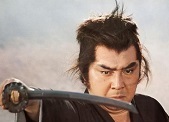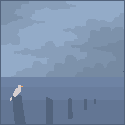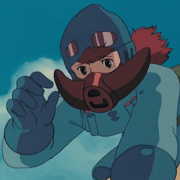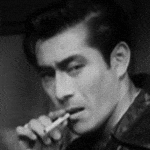|
Endman posted:Speaking of Italian hats, what was the purpose of the Mazzocchio? (The sausage-like cloth wrap on the top dude's helmet in this picture):
|
|
|
|

|
| # ? May 11, 2024 05:43 |
|

MrMojok fucked around with this message at 07:44 on Aug 21, 2016 |
|
|
|
How the crap did the Germans simply not just shatter in the Soviet Winter Counter-Offencive?
|
|
|
|
Raenir Salazar posted:How the crap did the Germans simply not just shatter in the Soviet Winter Counter-Offencive? Devotion to the cause, and also they kinda did? Or if not shattered, were slowly chipped away. IIRC going up against Russia in winter is a thing that should not be done, as Bonaparte learned the hard way. And then Hitler repeated that mistake, because Hitler. Post WWII, it's assumed the outside temperature is the least of your worries, it's both literally and metaphorically hot, the soldiers don't expect to last long enough for Nuclear Winter to affect then. Also re: flamboyant military uniforms, it's still A Thing in the US Cavalry to wear the Stetson and spurs with ACUs. Like, it'd make sense, tradition-wise, to wear the hat and spurs and sword with the dress blue uniform, but looks a bit silly for tankers to wear spurs on tan suede desert boots. (disclaimer: all the veterans in my family wore blue trousers with a lighter blue stripe, black coats, and some color of beret at parade back before the beret was made the standard cover, I may have a bit of prejudice against cav and arty. OTOH I have called the one beret "girl scout hat" to the face of more than one guy who earned it, and they just said "yeah, that's a joke I've heard before.") Chillbro Baggins fucked around with this message at 08:39 on Aug 21, 2016 |
|
|
|
Endman posted:I'm not sure you really need to see when you're swinging a Halberd that massive. I feel like that's the most important time to see
|
|
|
|
Grand Prize Winner posted:I know a couple costume designers who are deeply into the history of fashion. If I remember later this week I'll see if I can dig anything up. One of my former professors really knows a lot about this kinda thing but we had a falling out so I'm a little hesitant. be reunited through your joint passion for floofy hats. You know it to be right
|
|
|
|
Raenir Salazar posted:How the crap did the Germans simply not just shatter in the Soviet Winter Counter-Offencive? Several reasons - the Soviets were still suffering from the combined effects of the purges and their own massive losses in Barbarossa and didn't have nearly as effective of an attacking doctrine as they did by '43/44. The German infantry formations were in better shape than their armored formations and defending against an attacker who doesn't have an effective armored doctrine is mostly a matter of machine guns and entrenchments. Finally, the Soviet logistics were also still pretty bad at this point, so they couldn't follow up on their successes well. The later war Soviet army would have shattered the Germans and had Bagration 3 years early, but the '41 army couldn't pull that off yet and so only won a major victory. The improvement in nearly every aspect of Soviet fighting ability was so massive in just a few years that the Barbarossa and late war armies are almost two different things. Operation Mars and 2nd Kharkov had similar problems, even in '42 they hadn't quite figured it out yet.
|
|
|
|
Monocled Falcon posted:In honor of my favorite band releasing a new album, I have a couple questions for the thread. https://en.wikipedia.org/wiki/Battle_of_Trzciana quote:Did the Swiss really just get out classed by Spanish and Landsknecht? Didn't they just try to keep up with tactical and technological improvements instead of just going back to their homes and give up on being mercs? HEY GUNS fucked around with this message at 10:19 on Aug 21, 2016 |
|
|
|
Rodrigo Diaz posted:I also learn a lot from talking to Hegel... quote:Here's a couple of cool vids: edit: the english never have visible eyelets on their jackets, they attach their pants to their jackets with a "girdle belt" on the inside of the jacket, you can see it in the video. Visible eyelets is a European thing, as here:  I met an English guy at a reenactment who thought something was wrong when he saw the eyelets in my jacket, he'd just never seen them on the outside before. edit 2: the people in that video made the same mistake everyone always does tho--modern makeup and facial grooming. Smh. HEY GUNS fucked around with this message at 10:16 on Aug 21, 2016 |
|
|
|
Flanker Pylon posted:Not quite as ample, I'm afraid. on the other hand, the nasal bar is a good place to attach a gopro
|
|
|
|
PittTheElder posted:How destructive is the firing of a 15 inch battleship gun anyway? Like is it dangerous to any crew who might be topside during a firing? Undoubtedly it would be deafeningly loud I guess. Overpressure from a test firing of South Dakota's main battery supposedly ripped the pants off her Captain, Thomas Gatch. I believe South Dakota also shattered her scout plane when her rear turret opened fire at Second Guadalcanal. The Iowas were restricted from firing abaft the beam in order to protect their electronics, and proposed installation of Sea Sparrow was cancelled on the modernization because test firings at Dahlgren found that there was no place on the ship where the fire control radars wouldn't be shattered by shock from the main battery guns. The IJN found that Yamato's 18" rifles could knock an unprotected man unconscious at 50 meters.
|
|
|
|
Delivery McGee posted:Devotion to the cause, and also they kinda did? Or if not shattered, were slowly chipped away. IIRC going up against Russia in winter is a thing that should not be done, as Bonaparte learned the hard way. And then Hitler repeated that mistake, because Hitler. Post WWII, it's assumed the outside temperature is the least of your worries, it's both literally and metaphorically hot, the soldiers don't expect to last long enough for Nuclear Winter to affect then. I think the problem with the axiom of "never go after the Russians in winter" is that winter is not the kind of thing you can avoid in a prolonged campaign and Hitler(and most people in the German military at the time) had seen what happened in WW1 where Russia, partly due to how badly the war went, collapsed politically and winter campaigns had not been a serious problem. Most people in 1941 weren't looking to Napoleon- they were looking to Hindenburg and Ludendorff and the treaty of Brest-Litovsk, much more recent history. They were wrong, but it's a lot more understandable if you understand what happened in ww1.
|
|
|
|
And it's not like the Soviets were immune to their own winters.
|
|
|
|
From what I've read, Winter wouldn't have been as huge of a problem if it wasn't for Autumn and the prolonged rainy season that turned the already appalling Russian roads into rivers of mud. German logistics became bogged down and ensured the Winter punched Jerry right in his frozen, unprepared testicles.
|
|
|
|
It was also, I believe, supposedly an uncommonly bad winter that year.
|
|
|
|
OwlFancier posted:It was also, I believe, supposedly an uncommonly bad winter that year. This was german propaganda at the time but it wasn't especially true. Every winter probably seems like the icepocalypse when you've decided that warm woolies are an unnecessary frivolity. EDIT: Hell, the winter came early, which cut short the far more devastating Rasptitsa by freezing over the mud-hell that the rainy season makes the roads. And no, it wasn't the case that winter came too early for the winter clothing to get to them; the winter clothing didn't exist because the Germans were expecting a campaign that took... what was it, 6-8 weeks? They were completely delusional and failed to prepare for a protracted conflict. spectralent fucked around with this message at 13:31 on Aug 21, 2016 |
|
|
|
Hitler should have invaded Russia during winter 1939-40, I hear Soviets sucked at winter operations at that time.
|
|
|
|
Nenonen posted:Hitler should have invaded Russia during winter 1939-40, I hear Soviets sucked at winter operations at that time. Ironically the winter war clusterfuck was one of the reasons that the Germans assumed the Soviets would just immediately collapse.
|
|
|
|
Unrelated to anything, this story (found on Yahoo, I don't ordinarily read the NY Post) made me instantly think of this thread for some reason: US troops ally with evil Nazis to save horses from Russians
|
|
|
|
spectralent posted:Ironically the winter war clusterfuck was one of the reasons that the Germans assumed the Soviets would just immediately collapse. They sort of did just immediately collapse. Then surprise surprise they had a whole other army to replace the collapsed one.
|
|
|
Endman posted:From what I've read, Winter wouldn't have been as huge of a problem if it wasn't for Autumn and the prolonged rainy season that turned the already appalling Russian roads into rivers of mud. German logistics became bogged down and ensured the Winter punched Jerry right in his frozen, unprepared testicles. This is somewhat the case - in fact, despite the shattering losses I outlined, almost every field commander is just asking for a pause in the offensive until the ground freezes and becomes passable again. But the Germans were also totally unprepared for winter: they had no antifreeze, really, no camoflage, no winter clothing - and they didn't have the gas to run the tank engines 24/7 to keep them from freezing. And they knew it was going to be a problem - but all it did was encourage them to try to over-extend even more to take Moscow and strikethe final 'decisive blow'. But the whole thing is misconceived from the beginning: the German strategic objective was to force the war to end either by destroying the Soviet army unrecoverably or taking the capital and forcing an end, and they don't do the first and the second would not have worked. Plus, the Germans before Typhoon started already knew they didn't have enough supplies to extend beyond the initial encirclement battles - not enough to reach Moscow - but the gap was supposed to be filled by 'will' and whatever else. Raenir Salazar posted:How the crap did the Germans simply not just shatter in the Soviet Winter Counter-Offencive? The one true comparative advantage the Germans have is the professionalism of its forces - plus, the attrition I described was truer of the mobile forces that are pushing the lines than the infantry that follows (too far) behind. Once they grind to a halt they all dig in like crazy, because they're not totally stupid, and Soviet counter-attacks that are difficult to hold are already going on throughout mid-October, especially from Konev's front around Kalinin, north of Moscow. But you also have to consider this: Army group centre starts Typhoon with 1,900,000 mans. The Soviets start with 1,200,000 over the same area. The encirclements at Briansk + VIaz'ma capture or kill around 1,000,000 of those 1,200,000 soldiers. So the Soviets primary issue is waiting for enough reinforcements to actually hold the city, as well as fortifying the poo poo out of it; when Zhukov gets re-assigned from Leningrad his force in Moscow consists of about 95,000 people. Obviously his ranks swell fast but it takes time to build up the forces, and the forces he does get - Siberians aside - are mostly pretty green. And yeah, it was still a terrible Winter for Germany. The encirclements at Briansk, Viazma, and earlier at Kiev are the greatest feats of German arms in the war and they all occur in its first summer and autumn. Once they don't result in strategic victory the Germans are just hosed.
|
|
|
|
|
Why are the sibirian troops experienced? Civil war deployment, or is it khalkin gol or something?
|
|
|
|
ugly graph part 2
|
|
|
|
hello Nordic friends! have you heard of this guy? https://en.wikipedia.org/wiki/Torsten_St%C3%A5lhandske fendrich in GA's bodyguard in the 20s took 35 flags personally at Wittstock you should be very proud of him. that article is wrong though: Luetzen was a draw.
|
|
|
|
Tias posted:Why are the sibirian troops experienced? Civil war deployment, or is it khalkin gol or something? They were involved in the border skirmishes with the Japanese under Zhukov during the 30's which went on for around 5 years leading up to Khalkin Gol, they were top of the pile for deployment of good troops for quite a while because of that, Japan was russias historic enemy and on their borders.
|
|
|
|
I think as much as anything they're just not green reservists, know how to deal with a military operation in winter, and have good specialised winter equipment. They're not decisive to anything they're just another problem among many for the Germans.
|
|
|
|
|
HEY GAL posted:hello Nordic friends! have you heard of this guy? Wikipedia's 30YW articles have a slight Swedish bias. Some bad photos from the Finnish Cavalry Museum:  A painting of Stålhandske.  His coat of arms (stålhandske = steel glove)
|
|
|
|
Kind of Gotz-y!
|
|
|
|
Hogge Wild posted:Wikipedia's 30YW articles have a slight Swedish bias.
|
|
|
|
HEY GAL posted:hello Nordic friends! have you heard of this guy? No it wasn't! We won Lützen because we won the war, my dear enemy 
|
|
|
|
ThisIsJohnWayne posted:No it wasn't! We won Lützen because we won the war, my dear enemy that's weird, he looks a little dead to me. in which engagement could that have happened? 
|
|
|
|
Were Russia and France the only states that came out well from that war?
|
|
|
|
Polyakov posted:They were involved in the border skirmishes with the Japanese under Zhukov during the 30's which went on for around 5 years leading up to Khalkin Gol, they were top of the pile for deployment of good troops for quite a while because of that, Japan was russias historic enemy and on their borders. Much more than just the Japanese. There were also the basmachi and other bandits, plus whatever Chinese warlord thought he could get a piece of the northern pie.
|
|
|
|
Rodrigo Diaz posted:Were Russia and France the only states that came out well from that war? the only people that came out OK from it was Hesse-Kassel https://en.wikipedia.org/wiki/Countess_Amalie_Elisabeth_of_Hanau-M%C3%BCnzenberg (this woman became really important for about five minutes at the end of the war)
|
|
|
|
HEY GAL posted:hello Nordic friends! have you heard of this guy? He's buried in the cathedral in my hometown. His tin casket has been put on display there, along with his armor. I usually give a tour to people consisting of "this wrought iron fence is 700 years old", "here is the only queen that's been buried in Finland", "Åke Tott was a big deal and probably The Biggest Deal in Finnish history and boy did he marry well" and "Torsten Stålhandske was one of the best commanders of cav Sweden ever produced and boy did he marry well." Also: descendants of Stålhandske still leave flowers at his chapel in the cathedral.
|
|
|
|
awwwwww that's a good death, then. tell him hi when you see him next.  ed: everyone i dig is buried at least a 2 hour drive from me HEY GUNS fucked around with this message at 19:45 on Aug 21, 2016 |
|
|
|
Rodrigo Diaz posted:Were Russia and France the only states that came out well from that war? How about them United Provinces.
|
|
|
|
Mine warfare, 1945 – 1975. I’m afraid that my knowledge on technological mine development stops around 1945 and picks up again around 1991 with the quickstrike mine, I will do a little bit on current USN mine capability in another post along with the three wars in the Persian gulf, but I can’t really tell you anything about the development of mines in the modern military before that point beyond what you can read on the internet. Mine strikes have been overwhelmingly the biggest source of naval casualties for the USN since the end of WW2, they have sunk or damaged three times more ships in that time than every other type of attack combined. Mines – 15 ships. Missiles – 1 Ship. Air attack – 2 ships. Torpedo – 1 Ship Small boat attack – 1 Ship.  This excludes the attack by boat on the USS Cole as it happens outside the timescale of the chart. Korea. “We have lost control of the seas to a nation without a navy, using pre-WW1 weapons laid by vessels that were utilized at the time of the birth of Christ.” - Rear Admiral Allen Smith, task force commander of the Wonsan amphibious assault. “When you can’t go where you want to, when you want to, you haven’t got command of the sea. And command of the sea is a rock-bottom foundation for all our war plans. We’ve been plenty submarine-conscious and air-conscious. Now we’re going to get mine conscious starting last week.” – Admiral Forrest P. Sherman, Chief of Naval Operations Admirals Sherman and Smith were both commenting on the same debacle, that was the bungled major amphibious landing attempted at Wonsan in 1950. At the end of WW2 the USN had over 500 mine countermeasure ships in its inventory, by the time of the start of the Korean war, this had withered away to just 15; in addition to this 99% of all mine warfare officers in WW2 were reservists, this pool of trained men just evaporated taking with them the institutional experience for dealing with mines and leaving the USN almost helpless against mines. The reason for this was that with the advent of the Atomic bomb, the US reasoned that because it was now too dangerous to let a plan within reach of your borders because it may be carrying an atomic bomb that air defences would develop such that it was impossible, hence it was foolish to pursue air-dropped mines and the use of mines in warfare would die out. This is a mistake that the USN would make three times during the course of the cold war, first in Korea, then in the Persian gulf during the Iran-Iraq war and then again during Gulf 1, letting the mine warfare branch wither away to the point of irrelevance and paying for that in ships and lives. This despite the problem being very well summed up by Vice Admiral C. Turner Joy, Commander Naval Forces Far East – “The main lesson of the Wonsan operation is that no subsidiary branch of the naval service, such as mine warfare, should ever be neglected or relegated to a minor role in the future. Wonsan also taught us that we could be denied freedom of movement to an enemy objective through the intelligent use of mines by an alert foe.” The Wonsan operations was the effort by General Macarthur repeat the success of the landings at Inchon, the successful campaign to cut the Korean lines of communications and break their siege of the enclave of UN troops in the south east in the Pusan Peninsular. Wonsan is circled in red, the original landings at Incheon in black. The plan was to conduct landings at Wonsan in concert with a push by the SK 1st corps to the port in order to break the NK front lines and reach the Yalu river.  Wonsan and Inchon  Ground offensive map Wonsan was an excepllent target to the eyes of the planners as it had intact and large port facilities, good rail and road links to Seoul and and Pyongyang and had a large and developed airfield. The admiral in charge of planning was Admiral Struble, a veteran of the landings in the Phillipines, he had also been commander of Mine Forces Pacific at the end of WW2, he anticipated mines as the NK forces had used them before, but they had not shown large scale competence in their using of them. A sweeping operation was conducted and had some success, they employed helicopter scouts to spot mine areas for sweeping and had a force of six minesweepers tasked to the job. Wonsan was defended by the North Koreans via the use of a varied minefield covered by fire, it was a classic setup that we have seen many times before, it was largely comprised of mines of Russian design dating back to 1904, the Russians offloaded a lot of their equipment to NK as is well known, but the effectiveness of these mines was not diminished by the age of their design. They mixed the standard contact moored mine with newer ground influence types and covered the whole affair using shore artillery. The basic principle being that the shore artillery shoots the MCM vessels, the mines stop the supporting ships getting in close to neutralise the shore artillery and the varied types of mine make it very hazardous to sweep the whole field at once. Most of the minefield was laid by wooden sailing sampans and similar coastal fishing ships whose designs did indeed date back to somewhere around the time of Christ. The first problem they had was October 11th, Captain Spofford, the commander of the minesweepers had decided to shift his sweeping channel up north to avoid a large concentration of mines spotted by aerial reconnaissance. Early into the sweep the minesweeper Pirate struck a mine, shortly after the Pledge cut her sweeping gear and went to assist but started taking coastline fire from Sin-Do island complicating operations, Pledge recovered 43 of the 49 crew of the Pirate and then withdrew, attempting to leave via what he believed was swept water the Pledge struck a mine and sunk in short order, with another 5 fatalities, the remaining crew were retrieved and the shore batteries flattened by carrier aviation. But in the second day of sweeping the USN had lost a third of its sweeping capacity in the area, and 13% of its total sweeping capacity, not a good start.  Sweeping plan. The mines struck were magnetic ground mines, up until this point it was believed that the NK had only employed contact mines in large numbers, so the minesweepers were operating with standard sweeps from the WW1 era, totally ineffective against the magnetic mines. The Japanese sent a force of 8 minesweepers to assist and they started to make progress, sweeping successfully from the 14th to the 17th, on the 17th and 18th two Japanese minesweepers were lost to mines. The 18th was the point that magnetic mines were finally proven to exist, an ROK minesweeper detonated a mine under her keel, causing it to disintegrate with the loss of all hands, but the entire ocean started to erupt around the sweeping flotilla from a USN magnetic influence sweep. This was very bad news because it meant 2 days before the landing the whole minesweeping effort would have to be restarted, they had not until this time swept for magnetic mines.  A USN raiding party was put ashore who penetrated a storage warehouse finding that the NK only had reserves of magnetic mines, which was the first lucky break because had there been a mix of pressure and magnetic mines then sweeping would be a virtual impossibility. Pressure mines are the most difficult type of mine to sweep and even in the modern day there is not a reliable method of doing so. Independently the intelligence services confirmed that the Russians had sent 3000 mines of varied types and advisors to assist the NK in laying the minefield to defend Wonsan. The strategy employed was a textbook Russian strategy, the contact mines are placed at the edges with the more rudimentary magnetic mines to create a convincing deception and be a general nuisance, once the enemy believed them swept they would run straight into the more sophisticated and modern magnetic types laid close to the harbour which was intended to create maximum damage among the minesweepers. It took the combined naval forces of the UN a further seven days to sweep a landing channel to Wonsan, delaying the operation by 5 days and costing 200 lives and five ships, the USN brought in acoustic sweeping gear in a sensible move to make sure that there were no more surprises waiting for them.  The Hammer Box acoustic mine countermeasure device, essentially a large pneumatic hammer than smacks into a large metal diaphragm. The USN forgot everything it had learned about mine warfare during WW2, its two biggest failings were: Failure to scout out and neutralise supporting batteries until after sweeping had begun. Low number of minesweeping vessels meant that the enemy was forewarned of attempted amphibious landing because of the long time it took to clear the mines. For the Normandy landings over 300 minesweepers were employed, they swept very quickly and efficiently giving the enemy the least possible notice, the only reason that it did not become a very bloody affair indeed was that while the amphibious forces were delayed by the minefield the ROK 1st Corps had taken Wonsan from the sea, but use of its port facilities for logistical purposes was delayed for many weeks while sweeping efforts took place. The Wonsan debacle was the point that mines most delayed the UN in the Korean war, but throughout the war there was a huge quantity of casualties among minesweeping forces that could have been avoided had they been better equipped, supported and prepared They accounted for just two percent of all naval forces but suffered twenty percent of all naval casualties. It did however spur, under the leadership of Admiral Sherman a huge effort in mine development and sweeping which lead directly into… Vietnam. By the time of Vietnam the US had built up large stockpiles of MK 36, 40 and 41 Destructor mines, these were converted from GP bombs and were interesting in that they are useable as either ground or sea air dropped mines. It is a 1’000 pound GP bomb with a tail kit added, they are airdropped and strike the ground or sea floor, burying themselves deep and detonating with a magnetic influence detector with a ship or a tank rolls over the top of them. Over 11’000 of these mines were seeded in Vietnam’s shores and jungle pathways during the course of the Vietnam War.  The most major mining operation of the war was in 1972, the USN mines Haiphong harbour in Operation Pocket Money, using the Mk 40 Destructor mine, Mk 52 Magnetic mine and Mk 36 acoustic mines dropped from A-6 Intruders and A-7 Corsairs flying from the USS Coral Sea. At the time 85% of all naval freight into NV came through the Port of Haiphong. The operation itself took place at very low altitude to evade SAM fire, with air cover being given by two CG’s, the USS Long Beach and the USS Chicago who had free fire over any aircraft in their missile envelope to keep MiG’s away from the minelayers.  Haiphongs general geographic location showing major transport links.  Mining plans of Haiphong.  Mk 52 Magnetic mine.  MK36 Acoustic mine. At the time of dropping there were 37 foreign ships in Haiphong harbour, the mines were set with a 3 day activation fuse to allow them time to leave, and a 180 day deactivation fuse. Only 4 ships managed to leave the harbour in that time before the harbour was completely closed. NV had no minesweeping capability to speak off and no real prospect of developing any to combat the very sophisticated US mines and so the largest harbour of NV was closed. There were multiple other operations that took place which essentially cut off NV from all water born trade. Eventually the US would take responsibility for clearing the mines during the Paris peace talks as part of a larger bargain for returning prisoners of war, the mines to my knowledge did not cause large quantities of casualties but they inflicted a near 100% tonnage blockade of NV badly affecting its ability to receive replacement equipment, especially combined with the US bombardment of all of NV’s land based infrastructure during the Linebacker offensives. Next time – 1967 Arab Israeli war, Yom Kippur war, Iran-Iraq war, Gadaffi in the red sea and Gulf 1.
|
|
|
|
HEY GAL posted:ugly graph part 2 what are you using to make these and how can I help make them not ugly
|
|
|
|

|
| # ? May 11, 2024 05:43 |
|
Pellisworth posted:what are you using to make these and how can I help make them not ugly libre office how do i turn the years 90 degrees so they take up less space and can i pick my own colors on libreoffice?
|
|
|






 Bad Angus! Bad!
Bad Angus! Bad!


























